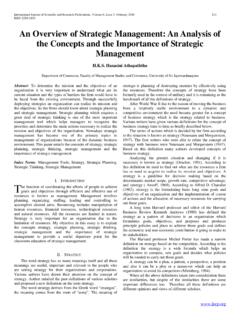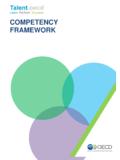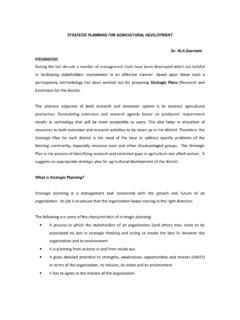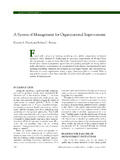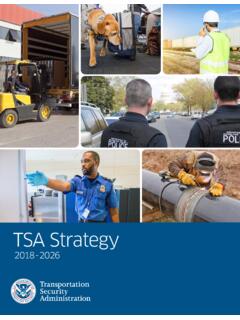Transcription of Strategic Risk Management for Development NGOs: The …
1 Seton Hall Journal of Diplomacy and International Relations125 Strategic Risk Management forDevelopment NGOs: The Case of a Grant-makerby Ricardo Wilson-GrauINTRODUCTIONThe global environment in which nongovernmental organizations ( ngos )1operate is changing quickly, as is the very nature of the risk Management functionand the process for making decisions about risk. These changes affect not onlyNGOs and the public that is served, but also the organizations that fund pace with changes in the overall economic, political, and cultural environmentin risk Management practice and in leading thinkers understanding of risk is vitallyimportant to every NGO s success in carrying out its mission and accomplishing itslong-term goals. That is, managing risk is a Strategic challenge advances in the global understanding and Management of risk openopportunities for grant-making ngos to improve their process of funding NGOgrantees.
2 The grantor can enhance its own and its grantees performance by applyingsound, consistent Strategic risk Management . The recipient organization will achievemore and ultimately, so too will the world these organizations strive to first part of this article describes how Strategic Management of risk canmake a difference to organizational operations in the fast-paced, demandingenvironment of Development ngos . The second part draws on the experience ofa major Dutch private donor NGO to exemplify applying Strategic risk managementto the grant-awarding OF NGO Strategic RISK MANAGEMENTT hese are hard, challenging times for ngos around the world. Whether serviceor social change oriented, ngos operate in dynamic economic, political, technological,and institutional environments. For ngos devoted to Development in both the Northand South, with increasing frequency, their legitimacy is questioned and accountabilitydemanded.
3 Stakeholders and the broader society and governments are frequentlyasking NGO leaders about their impact on society? Ricardo Wilson-Grau is a Management consultant and since 1993, a senior advisor with Novib,where he is responsible for researching and developing applications of Strategic risk WILSON-GRAU Seton Hall Journal of Diplomacy and International RelationsThese changes require that ngos modify how they respond to the world andseek to shape it. Consequently, many Development ngos are altering their strategies,as the shift to rights- and results-based approaches exemplifies. Moreover, they arevarying their strategies more frequently than in the past. Change, of course, hasalways been important in every organization s life. Indeed, for ngos , change isabsolutely essential; every NGO s mission statement commits it to improving someunacceptable aspect of the world.
4 Change, however, brings with it uncertainty The Simple and The ComplexThe root word of risk, risicare, means to dare. Daring to act audaciously isinherent to the lives of ngos . Without taking risks , there is no innovation or socialchange. The nature of NGO work is to dare constantly to make decisions and act toachieve positive results, while daring to hazard bad outcomes. One of the beautiesof the risk concept is its simplicity. As with anything occurring in the future, there isuncertainty about the results, desirable or undesirable; there are consequences of eachgood or bad result; and one needs to focus on the probability of positive and negativeresults. Of course, life cannot be so simple. There is an equally important and muchmore complex dimension to risk. Individuals, organizations, and societies are allunique.
5 Thus, risk is rooted in specific historical contexts from the political andpsychological to the economic and environmental that shape people s perceptionsof the consequences and the probability of an uncertain and local and national governments apply riskmanagement in situations where there is a precise mathematical calculation of probabilities,people will act on their beliefs about the chances of good and bad results. Similarly,people take action based on their preferences for one result over another, even whenthey know precisely the potential benefits. Of course, when a judgment is about theuncertain future results of social change, the decision is especially subjective Management is relatively new for ngos . One reason is the ease NGOdecision-makers have in confronting operational hazards that only one hundred yearsago would have been terrifying.
6 Insurance controls the damage caused by illness oraccidents. Personnel access loans in case of personal or family emergencies. Thedangers of disaster that come with all new technology are more readily mitigatedthan ever before, as when ngos use virus shields and back-up systems to protectcomputers against electronic attack or human A second reason is that applyingrisk Management to achieving upside results, and not solely avoiding the downsideones, is a recent innovation. In today s highly competitive and unpredictableenvironment, ngos not only face major opportunities and new dangers to achievetheir missions, but these positive and negative risks are arising much more rapidlySTATEGIC RISK MANAGEMENT127 Summer/Fall 2004than in the past and are becoming more complex. They must be managed as neverbefore.
7 Consequently, NGO decision-makers that use Strategic risk managementmay actively nurture success and counter threats of Emerging Concept of Strategic Risk ManagementIn the last ten years, the concept of risk Management has expanded from itsorigins in the insurance industry. It has extended into the fields of investment finance,medicine, environmental Management , space science, and meteorology. Today,business and local and national governments apply risk Management principles. Thetheory and practice has also grown from its original focus on exposure to negativerisks to address positive risks as well. Building on traditional risk science, strategicrisk Management centers on a reinforcing, iterative process, a recycling sequence ofsteps for making and implementing decisions involving potential bad or good results.
8 Clarifying what the organization seeks to achieve goals. Identifying the principal opportunities and dangers that may affect achievingthese goals uncertainties. Assessing the likelihood that each opportunity or threat will materialize probabilities. Calculating the extent of the resulting gain or loss to the organization fromeach opportunity or danger magnitudes of the good or bad consequences. Weighing what the organization can do: 1) to increase the probability and themagnitude of the good consequences of each opportunity, and 2) todecrease the probability and the magnitude of the bad consequences ofeach danger risk Management techniques for each opportunity or threat. Deciding whether and how the organization is able to take these actions costs and benefits of each definition of risk is powerful. Instead of struggling to avoid all uncertainties for that would be to avoid all chances of positive outcomes an organization strivesto increase the chances and size of positive outcomes while reducing the odds andmagnitude of the negative outcomes.
9 This dual strategy is the essence of Strategic riskmanagement. It contrasts with the narrow, negative traditional focus merely preservingthe organizations past achievements from future losses. While guarding against loss,the NGO that manages risk strategically takes carefully chosen chances, purposelymindful of the positive side of a potentially surprising future. An organization managingrisk strategically dares to Tool for NGO Decision-makersIn recent years around the globe, NGO organizations that are committed tosocial change have strengthened their professional Management to achieve theirmissions and long-term goals. NGO leaders once could safely assume that internaland external conditions with a potential major impact on their stakeholders, programs,property, income, and reputation would be stable for a year or two.
10 No more. Currentlyand even more so in the future, the strategy is short term. For example, one major128 WILSON-GRAU Seton Hall Journal of Diplomacy and International Relationsinnovation in NGO Management has been to introduce systems of Strategic , ngos engage every three, four, or five years in this fundamental decision-making for achieving institutional goals. Increasingly, however, change is so rapidthat managers at all levels of the organization must make decisions vital to achievingtheir missions outside the multi-year cycle. Now, monthly and even weekly, an NGO sentire Management must adapt to and participate in incisive Strategic thinking andprompt Strategic action. In fact, virtually everyone in an NGO must continuallyunderstand, accept, and participate in actions sharply focused on achieving theirorganization s fundamental purpose and is easier said than done.


